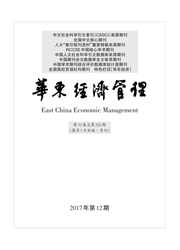

 中文摘要:
中文摘要:
财政社会保障支出是调节居民收入的重要手段,有效缩小收入差距,保障人民生活水平是其核心功能,而实践与理论是否一致则需要进一步地研究论证.文章从区域视角切入,基于江苏省13市的面板数据,利用新古典增长理论构建模型进行收敛回归分析,对比在模型中加入社会保障支出这一控制变量前后收敛系数β的变动,从而分析社会保障支出对江苏省全省以及分别在江苏省南北内部的居民收入是起到“正向调节”抑或“逆向分配”的作用.回归结果显示,在苏南地区社会保障支出对收入起到“正向调节”作用,而在江苏全省和苏北地区则起到“逆向分配”的反效果,进而对江苏省提高社会保障支出水平,健全完善社会保障体系结构,平衡区域内部发展提出了新的挑战.
 英文摘要:
英文摘要:
Fiscal expenditure on social security is an important means to adjust residents’income. Its core function is to ef-fectively narrow the income gap and protect people’s living standards. However,whether the practice is consistent with thetheory requires further research and demonstration. From the regional perspective and based on the panel data of 13 citiesin Jiangsu province,we employ the neoclassical growth theory to build a model to conduct a convergence regression analy-sis. Contrasting the variation of convergence coefficient β before and after adding the control variable of social security ex-penditure,we analyze social security expenditure plays either a“positive adjustment” or a“reverse distribution” role inresidents’income in both the whole province and the northern and southern areas of it. The regression results show that so-cial security expenditure has a “positive adjustment” effect on income in the southern areas,whereas it has a “reversedistribution” opposite effect in the whole province and the northern areas of it. And then to raise the level of social securityexpenditure,to improve and perfect the social security system structure and to balance development within the region arenew challenges to the province.
 同期刊论文项目
同期刊论文项目
 同项目期刊论文
同项目期刊论文
 期刊信息
期刊信息
